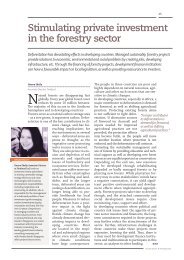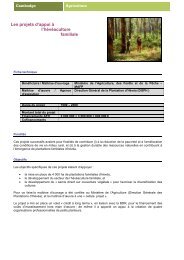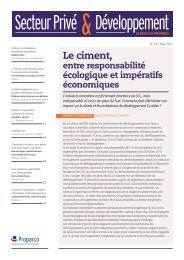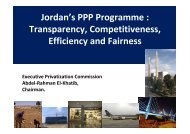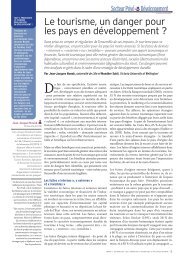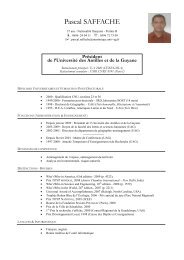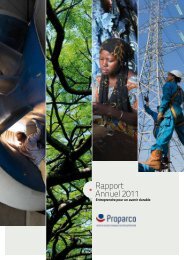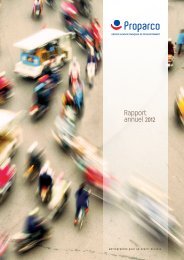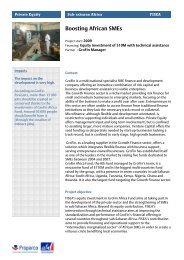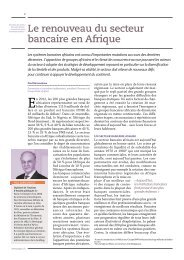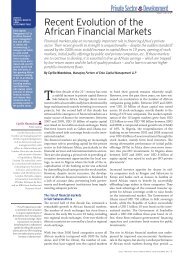Integrating Poor Populations in South African Cities - Agence ...
Integrating Poor Populations in South African Cities - Agence ...
Integrating Poor Populations in South African Cities - Agence ...
You also want an ePaper? Increase the reach of your titles
YUMPU automatically turns print PDFs into web optimized ePapers that Google loves.
Public Policies on Hous<strong>in</strong>g and Urban Integration <strong>in</strong> <strong>South</strong> Africa<br />
Urban Challenges<br />
After apartheid was legally abolished, the urban challenges that needed to be<br />
overcome were considerable. One first had to deal with <strong>in</strong>equalities of all types, but one<br />
also and above all had to deal with the extreme diversity of <strong>in</strong>herited situations. Far from<br />
simply a high-level segregation system, apartheid differed from other colonial segregation<br />
systems <strong>in</strong> its objectives and its constant violence aga<strong>in</strong>st <strong>in</strong>dividuals and groups,<br />
def<strong>in</strong>ed by political eng<strong>in</strong>eer<strong>in</strong>g that established micro classifications that aimed to<br />
create multiple “racial” sub-groups that were placed <strong>in</strong> a hierarchy and given different<br />
rights, for <strong>in</strong>stance access to land. The effects of this eng<strong>in</strong>eer<strong>in</strong>g still <strong>in</strong>fluence identitybased<br />
behaviours and concepts of one’s “rights to this or that”.<br />
This excessive identity-based fragmentation is <strong>in</strong> part l<strong>in</strong>ked to the extreme<br />
complexity of legacies <strong>in</strong> terms of the macro urban structure, rights to land, and<br />
adm<strong>in</strong>istrative and fiscal practices. The racial urbanism made systematic <strong>in</strong> the<br />
1950s itself varied over time and space. The apartheid city model was an ideal to<br />
atta<strong>in</strong>, often neared <strong>in</strong> small cities much more than <strong>in</strong> large ones. Among other<br />
th<strong>in</strong>gs, the time frames of urban policies were more or less aligned with those of the<br />
regime itself. Until the end of the 1950s, attempts to atta<strong>in</strong> the model predom<strong>in</strong>ated<br />
(racial zon<strong>in</strong>g, construction of the townships). With the “great apartheid” of the<br />
1960s, the construction of townships ceased, and massive deportations to<br />
bantustans with the aim of exclud<strong>in</strong>g blacks from the city <strong>in</strong>creased. To mobilize the<br />
labour force <strong>in</strong>dispensable to white capitalism, hostels for temporary “s<strong>in</strong>gle” migrants<br />
were built and new urbanized areas were created — simple bedroom communities<br />
located on the edges of declared white zones, near pools of salaried jobs or growth<br />
po<strong>in</strong>ts and near the capital cities necessary for the adm<strong>in</strong>istration of the bantustans.<br />
The st<strong>in</strong>g<strong>in</strong>g political and economic failure of the bantustans, the impossibility of fully<br />
controll<strong>in</strong>g migrations, and the acceleration of migration to cities <strong>in</strong> the 1980s forced<br />
the regime to open (urban leases were authorized for blacks <strong>in</strong> 1982, the public<br />
hous<strong>in</strong>g stock was partially privatized <strong>in</strong> 1983, and property rights were extended<br />
to all <strong>in</strong> 1986) and accommodate migrants <strong>in</strong> improved frameworks. At the same<br />
time, illegal settlements (squatter camps) proliferated <strong>in</strong> the gaps between <strong>in</strong>habited<br />
areas, on their fr<strong>in</strong>ges, and with<strong>in</strong> townships (backyard shacks), and the boycott of<br />
rents and service payments <strong>in</strong> the townships, a political weapon that made them<br />
ungovernable, spread.<br />
17<br />
© AFD 2009 <strong>Integrat<strong>in</strong>g</strong> <strong>Poor</strong> <strong>Populations</strong> <strong>in</strong> <strong>South</strong> <strong>African</strong> <strong>Cities</strong>



